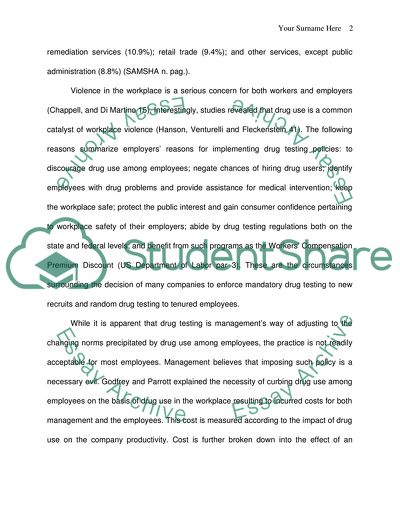Cite this document
(“Is Workplace Drug Testing a Wise Corporate Policy Research Paper - 1”, n.d.)
Is Workplace Drug Testing a Wise Corporate Policy Research Paper - 1. Retrieved from https://studentshare.org/social-science/1748911-is-workplace-drug-testing-a-wise-corporate-policy
Is Workplace Drug Testing a Wise Corporate Policy Research Paper - 1. Retrieved from https://studentshare.org/social-science/1748911-is-workplace-drug-testing-a-wise-corporate-policy
(Is Workplace Drug Testing a Wise Corporate Policy Research Paper - 1)
Is Workplace Drug Testing a Wise Corporate Policy Research Paper - 1. https://studentshare.org/social-science/1748911-is-workplace-drug-testing-a-wise-corporate-policy.
Is Workplace Drug Testing a Wise Corporate Policy Research Paper - 1. https://studentshare.org/social-science/1748911-is-workplace-drug-testing-a-wise-corporate-policy.
“Is Workplace Drug Testing a Wise Corporate Policy Research Paper - 1”, n.d. https://studentshare.org/social-science/1748911-is-workplace-drug-testing-a-wise-corporate-policy.


